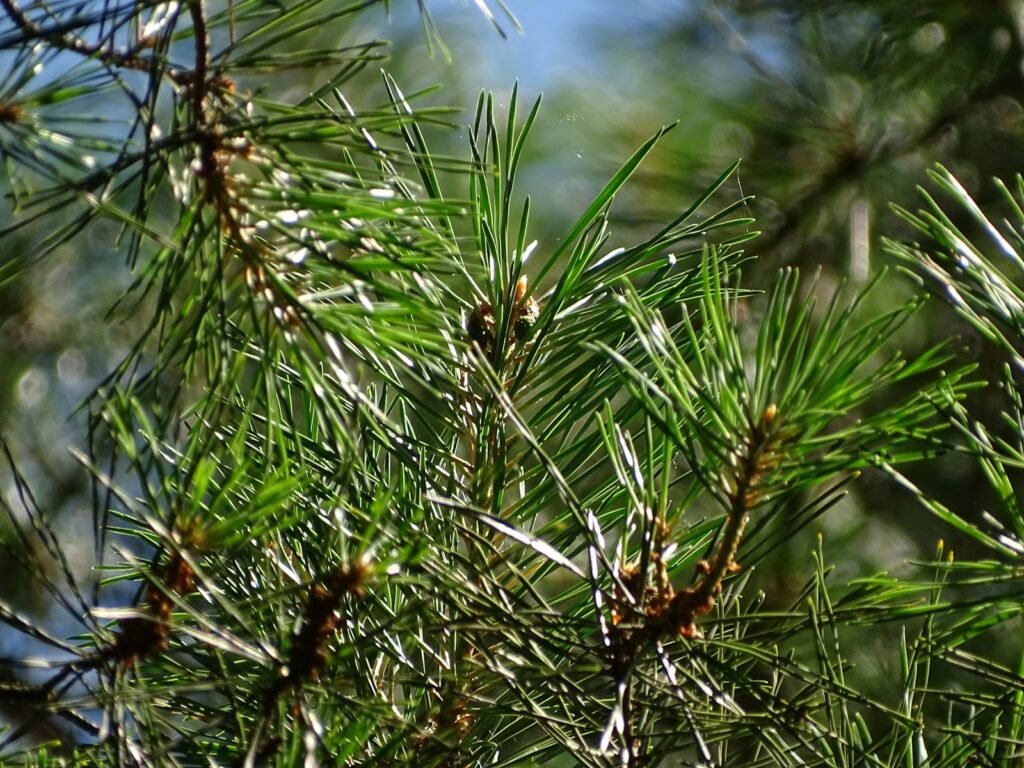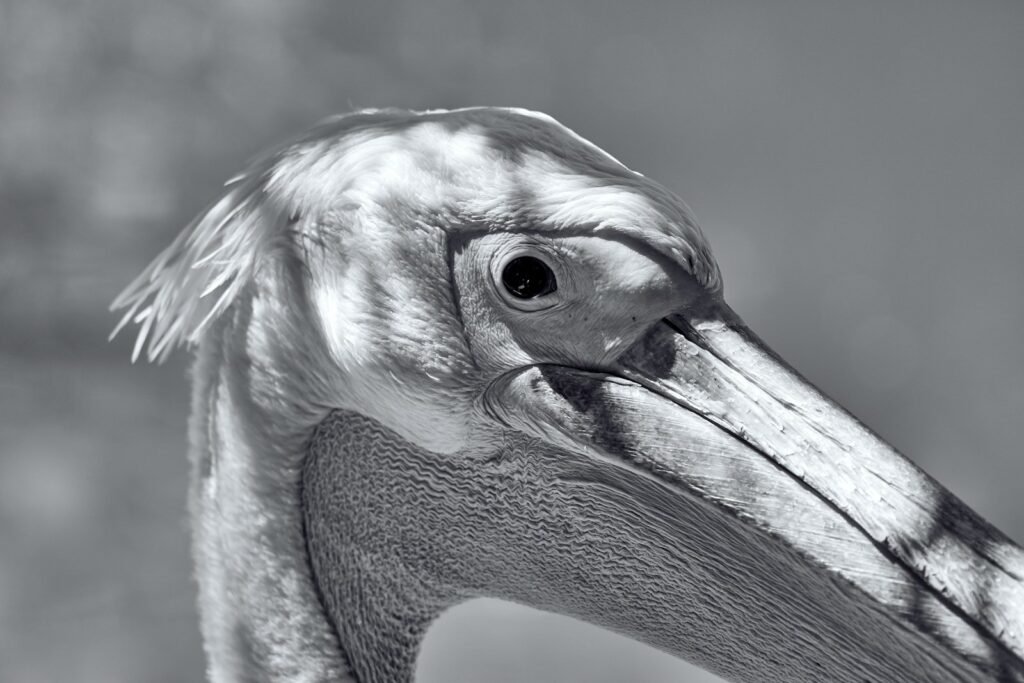In the dense rainforests of Madagascar, on the scorching dunes of the Namib Desert, and atop the windswept peaks of California’s White Mountains, something remarkable is happening. While we obsess over the fast-paced world of climate change and rapid technological solutions, nature’s most ancient survivors are quietly teaching us lessons about resilience, carbon storage, and time itself. These are Earth’s slowest-growing plants — living monuments that have witnessed the rise and fall of civilizations, weathered ice ages, and continue to thrive in conditions that would kill most other organisms within days.
Meet the Masters of Slow Growth
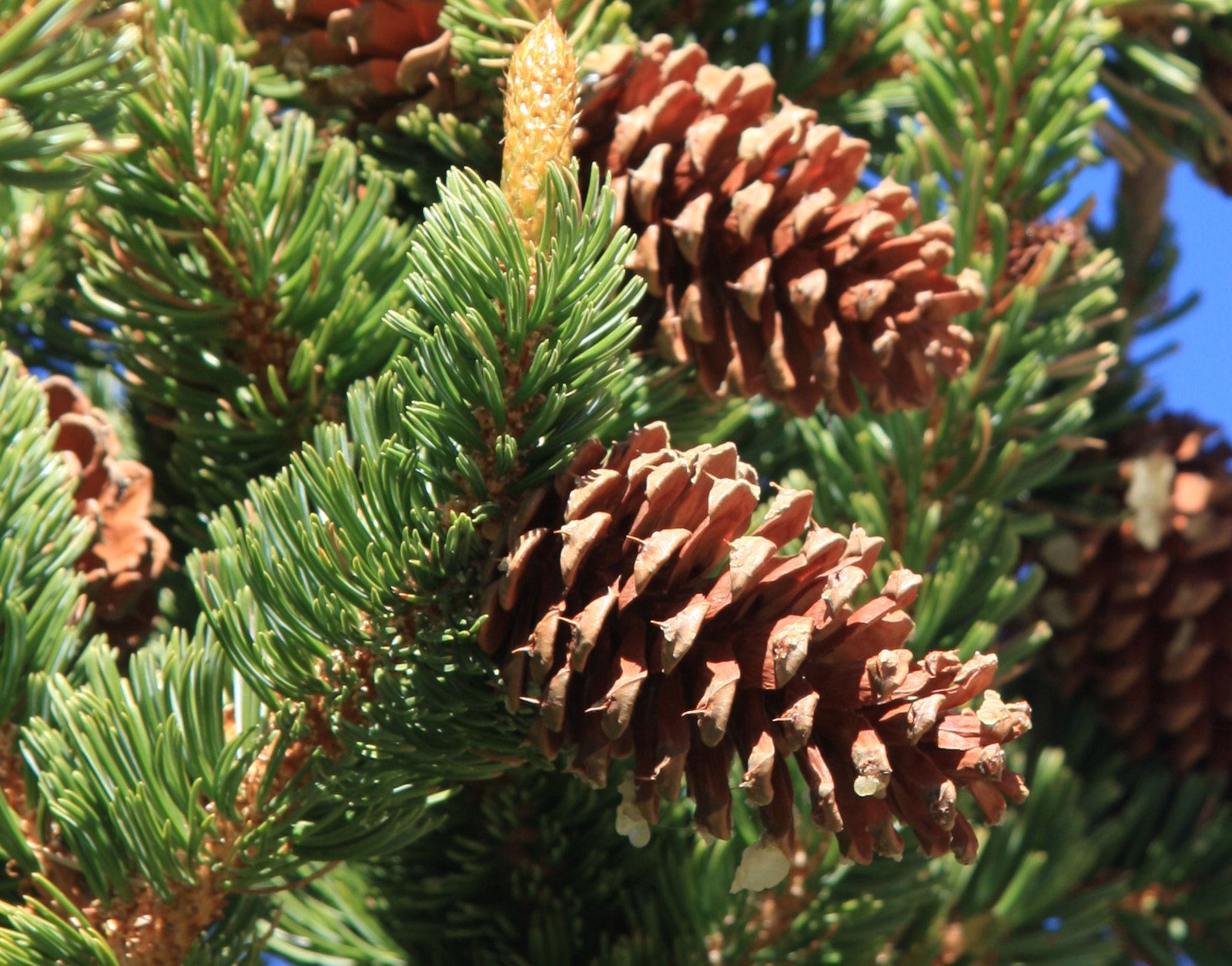
The plant is exceptionally long-lived, with many being hundreds of years old, and the oldest being potentially up to 2,000. Methuselah is a Great Basin bristlecone pine that is 4,856 years old and has been credited as the oldest known living non-clonal organism on Earth. Think about that for a moment — some of these plants were already ancient when the pyramids were being built. The world’s slowest-growing plants aren’t just biological curiosities; they’re living time capsules that hold secrets about how life adapts to extreme conditions. From bristlecone pines that add mere millimeters to their circumference each year to welwitschia plants that spend centuries nurturing just two leaves, these botanical marvels challenge everything we think we know about growth, survival, and success. Their glacial pace isn’t a flaw — it’s their superpower, allowing them to endure in environments where faster-growing species would quickly exhaust themselves and perish.
The Ancient Welwitschia: Desert’s Two-Leaf Wonder
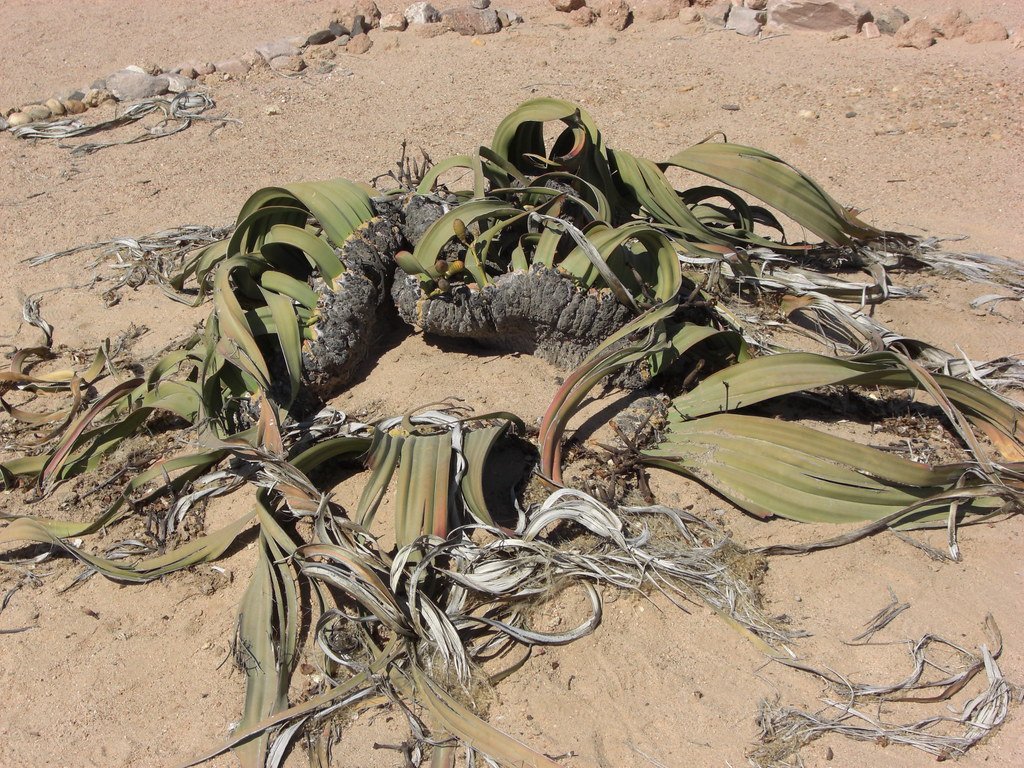
Across the harsh environment of the northern Namib desert, a truly unique plant has been flourishing, almost unchanged, for thousands of years. Welwitschia mirabilis can survive for hundreds of years in the arid desert by absorbing water from sea fog and deep groundwater. Picture this: a plant that produces only two leaves in its entire lifetime, yet those leaves can grow for over 1,500 years. Unlike any other plant, Welwitschia grows with just two leaves throughout its entire life. These leaves continuously grow from the base, often becoming frayed and splitting due to the harsh desert conditions. The welwitschia defies every rule in the botanical playbook, surviving on less than an inch of rainfall per year while its contemporaries in more hospitable climates live and die thousands of times over. Many desert dwelling animals, such as zebras, oryx and black rhinoceros, feed on the leaves of Welwitschia for a vital source of water. This desert giant has mastered the art of doing more with less, extracting moisture from morning fog and storing it in its massive taproot that can extend dozens of feet underground. What makes it even more fascinating is that scientists believe this remarkable plant could hold keys to understanding how vegetation might adapt to our increasingly arid world.
Bristlecone Pines: Time Travelers of the Mountain Peaks
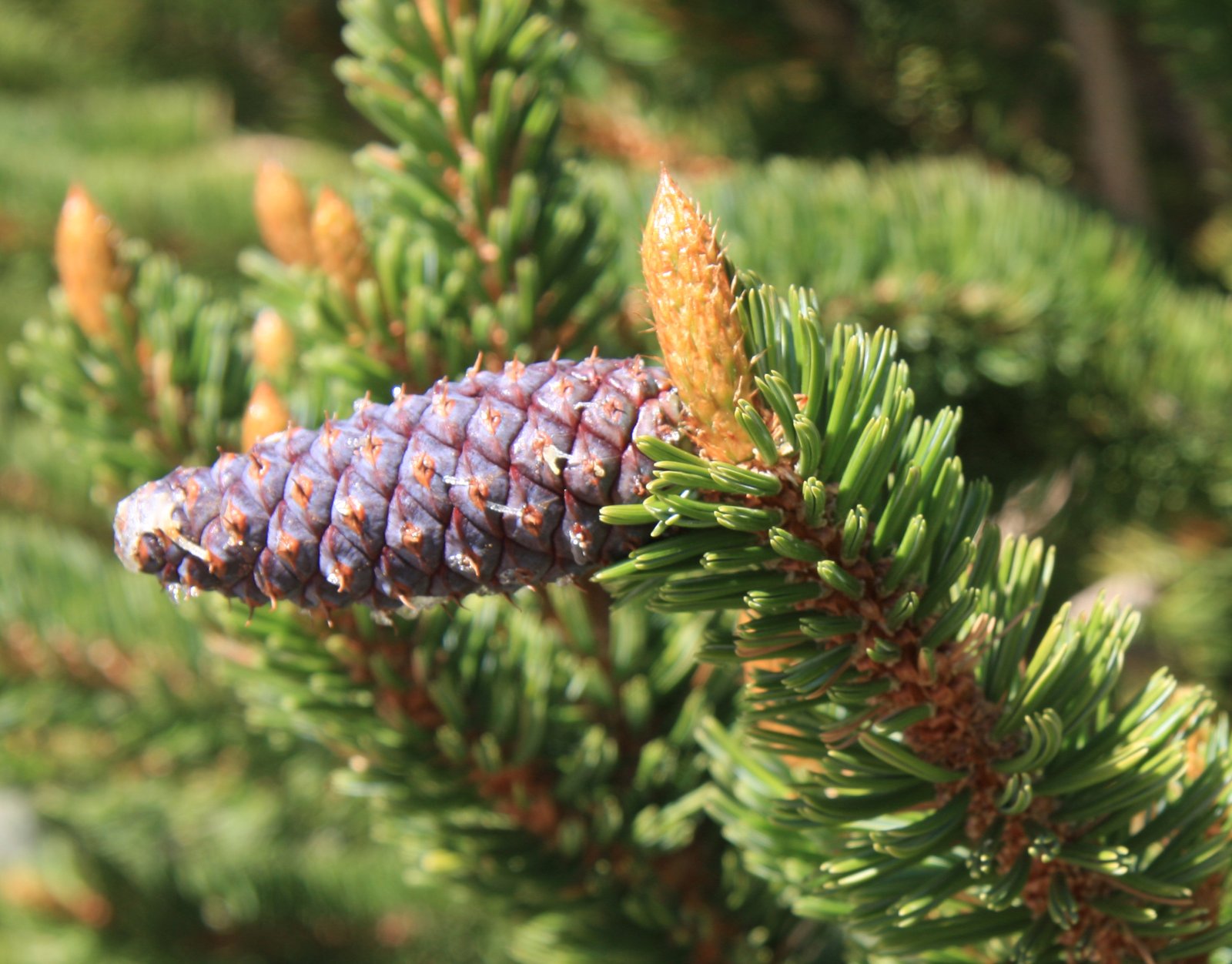
Methuselah was 4,789 years old when sampled in 1957 by Edmund Schulman and Tom Harlan, with an estimated germination date of 2833 BC. High in California’s White Mountains, where the air is thin and the growing season lasts barely three months, bristlecone pines have perfected the art of extreme longevity. Bristlecones are masters at adaptation. They’re most at home in the unhospitable arid, rocky slopes at altitudes up to 11,700 feet, where short summers and challenging weather give them their signature stunted and twisted look. These gnarled, twisted trees look almost dead, with only thin strips of living bark connecting their roots to a handful of branches. Yet this apparent weakness is actually their greatest strength — by growing so slowly and conserving every resource, they can survive for millennia in conditions that would stress-kill faster-growing trees within years. If a tree is damaged by fire or lightning, part of the xylem tissue, which conducts water under the surface bark, also dies away. In essence, the tree blocks its damaged parts so the surviving branches get a larger supply of nutrients. Their secret lies in their ability to essentially shut down non-essential parts of themselves during tough times, channeling all available resources to just the portions they need to stay alive.
Cycads: Living Fossils from the Age of Dinosaurs
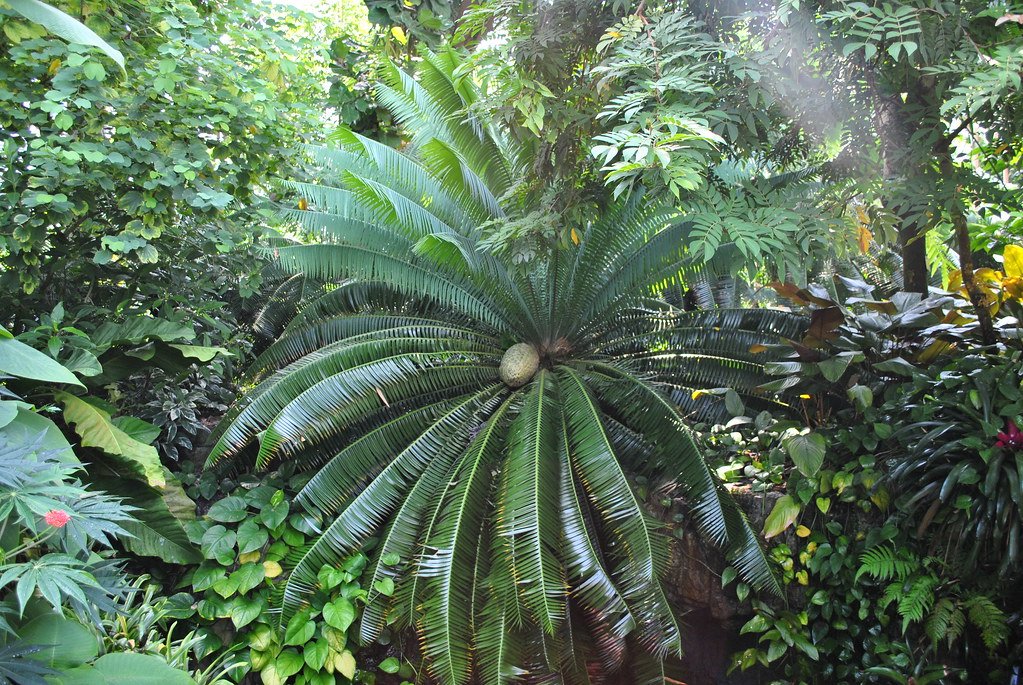
Cycads have thrived for over 300 million years, predating the dinosaurs. Their thick trunks and crown of stiff, palm-like leaves are reminiscent of a bygone era when they dominated the landscape. These ancient gymnosperms are incredibly hardy, some living for over a thousand years. Imagine walking through a landscape where cycads tower overhead — that was Earth 250 million years ago, long before flowering plants existed. Fossils of cycads date back to at least the early Permian (about 280 million years ago) but there is some debate over older fossils that may have come from the Carboniferous about 100 million years before the Permian. Cycads are gymnosperms, which means their seeds are exposed, and are easily recognized by the large seeds that grow out of the plants’ crown. In addition to being one of the most ancient plants, cycads are also some of the longest lived — they grow very slowly and can live for up to 1,000 years. Today’s cycads are direct descendants of those ancient plants, virtually unchanged despite witnessing the rise and fall of the dinosaurs. Their incredibly slow growth rate — some species take 50 years just to produce their first cone — means individual plants can live for centuries, with some specimens estimated to be over 1,000 years old. Unfortunately, their longevity couldn’t protect them from human interference, and many species now teeter on the brink of extinction due to illegal collection and habitat destruction.
The Wollemi Pine: Back from the Dead
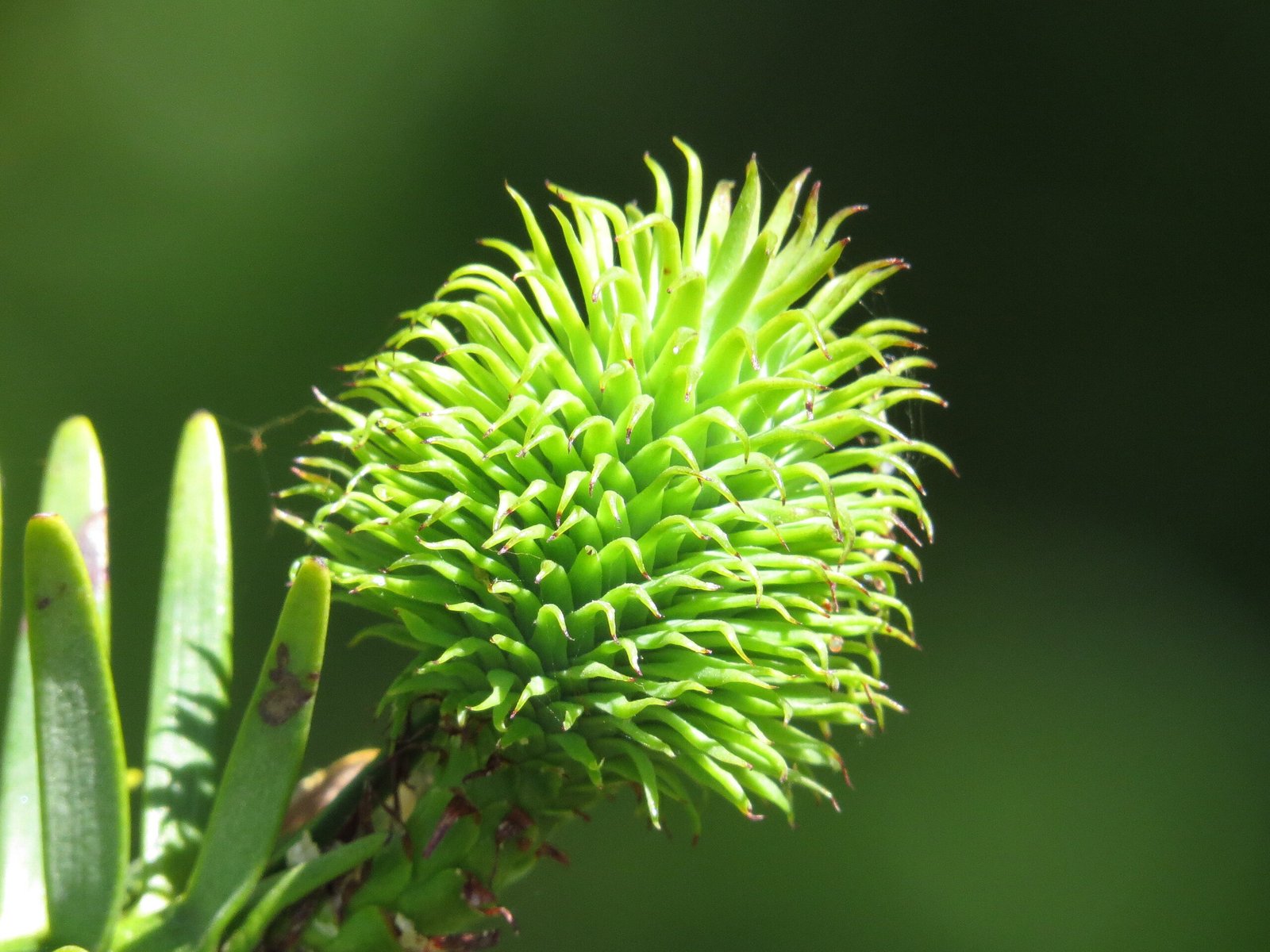
Prior to its discovery in 1994, the Wollemi Pine or Wollemia was only known from the fossil record. Despite its name, Wollemia is not a true pine or member of the the pine family but is related to the Agathis, another ancient plant on this list. In 1994, an Australian park ranger stumbled upon one of the greatest botanical discoveries of the 20th century — a grove of trees that science thought had been extinct for millions of years. The Wollemi pine is critically endangered and is on the IUCN’s (International Union for Conservation of Nature) Red List. Since 2006, a propagation program has been implemented to help the Wollemi pine remain viable. The Wollemi pine, with its distinctive bubbly bark and unusual branching pattern, represents a lineage that dates back 200 million years. These “living fossils” grow incredibly slowly, with some specimens taking decades to reach maturity. In its native Australia, potted Wollemia are sold as an alternative to Christmas trees. Additionally, the Royal Botanic Gardens in Sydney have published information on how to grow Wollemi pines from seeds which have been harvested from forest trees. What makes their story even more remarkable is that fewer than 100 adult trees exist in the wild, all hidden in a secret location in Australia’s Blue Mountains. The species’ slow growth rate, while contributing to its longevity, also makes conservation efforts particularly challenging — every tree lost represents decades or centuries of irreplaceable growth.
Ancient Oaks: Europe’s Thousand-Year Guardians

Scattered across Europe’s countryside stand oak trees that have watched over human civilization for over a millennium. Located in the graveyard of St. Digain’s parish church, among primitive stone crosses made during the Dark Ages, this mighty yew tree has stood here for nearly 4,000 years. These ancient giants, with their massive trunks and sprawling canopies, can live for 800-1,000 years or more, growing just a few centimeters in diameter each year. Some of the most famous specimens, like the Major Oak in England’s Sherwood Forest, have trunks so large that it would take more than a dozen people holding hands to encircle them. Their slow, steady growth creates incredibly dense, durable wood that has been prized for centuries in shipbuilding and construction. What’s particularly fascinating is how these ancient oaks continue to support entire ecosystems — a single mature oak can host over 500 different species of insects, birds, and other organisms. Their longevity means they serve as biological libraries, with their growth rings recording centuries of climate data that scientists use to understand historical weather patterns and environmental changes.
The Dragon’s Blood Tree: Umbrella of the Desert Island
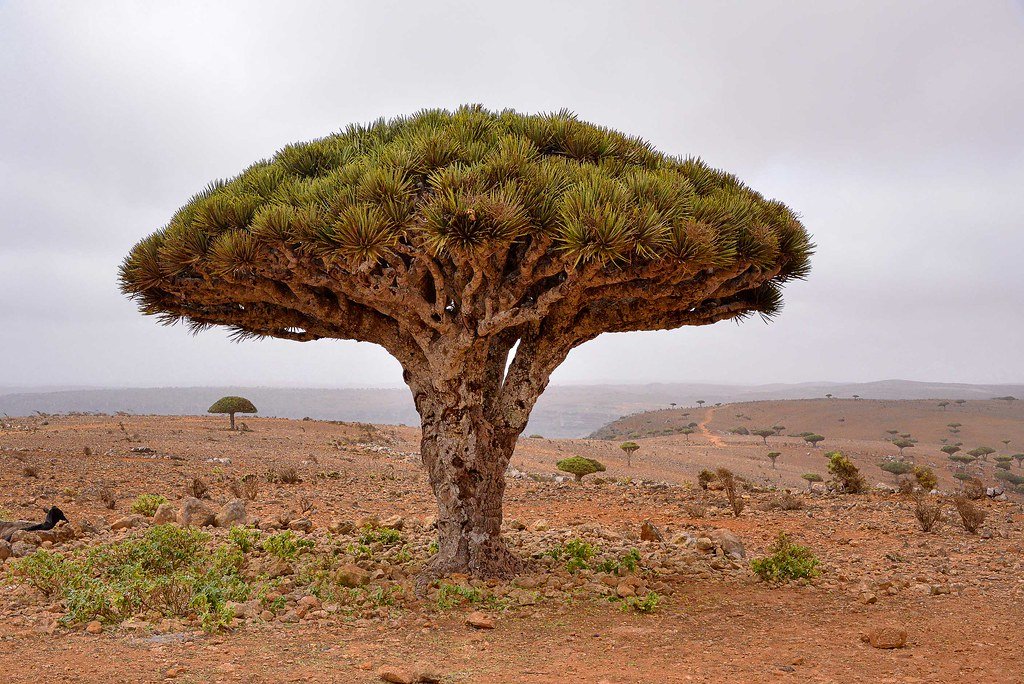
On the remote island of Socotra, off the coast of Yemen, stands one of the world’s most bizarre-looking trees. The dragon’s blood tree, with its distinctive umbrella-shaped crown and thick, succulent branches, grows at a pace that would make a sloth seem speedy. These remarkable trees can live for several hundred years, with some specimens estimated to be over 500 years old. Their unique appearance isn’t just for show — the umbrella-like canopy creates a microclimate underneath, providing shade and reducing water evaporation in the harsh desert environment. The tree gets its name from the dark red resin it produces, which has been valued since ancient times for medicinal and decorative purposes. What makes these trees particularly special is their extreme endemism — they exist nowhere else on Earth, having evolved in isolation on Socotra for millions of years. Their slow growth and specialized habitat make them vulnerable to climate change and human interference, with scientists worried that rising temperatures could push them toward extinction within the next century.
Baobab Trees: Africa’s Upside-Down Giants

African folklore says the gods planted baobab trees upside down, with their roots reaching toward the sky. These massive, bottle-shaped trees are among the slowest-growing plants on the continent, with some specimens living for over 2,000 years. A baobab can take 200 years just to reach maturity, and their growth rate is so slow that their trunk diameter increases by less than an inch per year. Despite their sluggish growth, baobabs can reach enormous proportions — some have trunks so wide that entire families have lived inside hollowed-out specimens. The tree’s ability to store water in its trunk allows it to survive in extremely arid environments where other trees would quickly perish. During droughts, local communities have traditionally relied on baobabs for water, food, and medicine, earning them the nickname “tree of life.” What’s particularly striking about these ancient giants is how their slow growth enables them to survive extreme climate variability — they can endure years of drought followed by sudden floods, adjusting their metabolism to match whatever conditions nature throws at them.
Antarctic Moss: The Ultimate Slow-Motion Survivor

In the frozen landscapes of Antarctica, where most life cannot exist, tiny moss plants are rewriting the rules of survival. These microscopic green carpets grow so slowly that some patches may be hundreds or even thousands of years old, adding just fractions of a millimeter to their height each year. What makes Antarctic moss truly extraordinary is its ability to essentially pause its life processes during the brutal winter months, then resume growth during the brief Antarctic summer. Some species can survive being completely frozen for months, then spring back to life when temperatures rise above freezing for just a few weeks each year. Research has shown that some moss samples can remain viable after being frozen for decades, making them some of the most resilient organisms on Earth. Their extremely slow growth rate is actually an adaptation — by growing so slowly, they conserve precious energy and nutrients in an environment where resources are scarce and the growing season is measured in weeks rather than months. Scientists studying these remarkable plants hope they might hold clues about how life could survive on other planets with harsh, Mars-like conditions.
Century Plants: The Ultimate Procrastinators

The century plant lives up to its name in the most dramatic way possible — it spends decades slowly building up energy and resources, then explodes into a spectacular flowering display before dying. Despite their name, these desert succulents typically live 10-30 years, though some specimens in harsh conditions have been known to wait up to 100 years before flowering. For most of their lives, century plants grow almost imperceptibly slowly, adding just a few new leaves each year while their root systems spread underground. Their growth strategy is the ultimate in delayed gratification — they invest everything in survival first, reproduction second. When they finally do decide to bloom, the results are spectacular: a flowering stalk can shoot up 20-30 feet in just a few weeks, covered in hundreds of yellow flowers that attract pollinators from miles around. After this massive reproductive effort, the plant dies, having literally given everything for the next generation. Their slow-growth strategy ensures they only reproduce when conditions are absolutely perfect, maximizing the chances that their offspring will survive in the harsh desert environment.
Japanese Umbrella Pines: Ancient Elegance in Slow Motion

The Japanese umbrella pine (also called koyamaki or Sciadopitys verticillata) is an ancient coniferous tree native to Japan. It is the sole living species in the family Sciadopityaceae and the Japanese umbrella pine has been in the fossil record for about 230 million years. In the misty mountains of Japan grows a tree so unique that it represents an entire family all by itself. The Japanese umbrella pine, with its distinctive whorled needles that resemble the spokes of an umbrella, is a living relic from the age of dinosaurs. These magnificent trees grow incredibly slowly, taking decades to reach maturity and centuries to achieve their full size. What makes them particularly special is their unique needle arrangement — instead of single needles like most conifers, umbrella pines have clusters of needles arranged in perfect circles around their branches. This unusual adaptation may help them capture more sunlight in their native forest environment. The species has survived multiple mass extinction events, ice ages, and dramatic climate changes, making it one of the most resilient tree species on Earth. Today, Japanese umbrella pines are considered a national treasure in Japan, where they’re often planted around temples and used in traditional landscaping. Their slow growth and ancient lineage make them living symbols of endurance and patience.
Ginkgo Trees: Survivors from the Mesozoic Era

The ginkgo tree is often called a “living fossil” because it’s the sole survivor of an ancient group of trees that dominated Earth’s forests 270 million years ago. These remarkable trees grow slowly and steadily throughout their extraordinarily long lives, with some specimens in China believed to be over 2,500 years old. Ginkgos are incredibly hardy and can survive in conditions that would kill most other trees — they’re resistant to pollution, pests, diseases, and even nuclear radiation (ginkgo trees were among the few living things to survive near ground zero in Hiroshima). Their fan-shaped leaves turn brilliant golden yellow in autumn before falling all at once, carpeting the ground in a spectacular display. What’s particularly fascinating about ginkgos is their unique reproductive system — they’re one of the few tree species with separate male and female trees, and fertilization occurs through swimming sperm, more like ferns than modern trees. Their extremely slow growth rate contributes to their longevity, with some trees adding less than a foot in height per year. This patient approach to growth allows them to develop the strong, resilient wood structure that helps them survive for millennia.
Alerce Trees: South America’s Ancient Giants
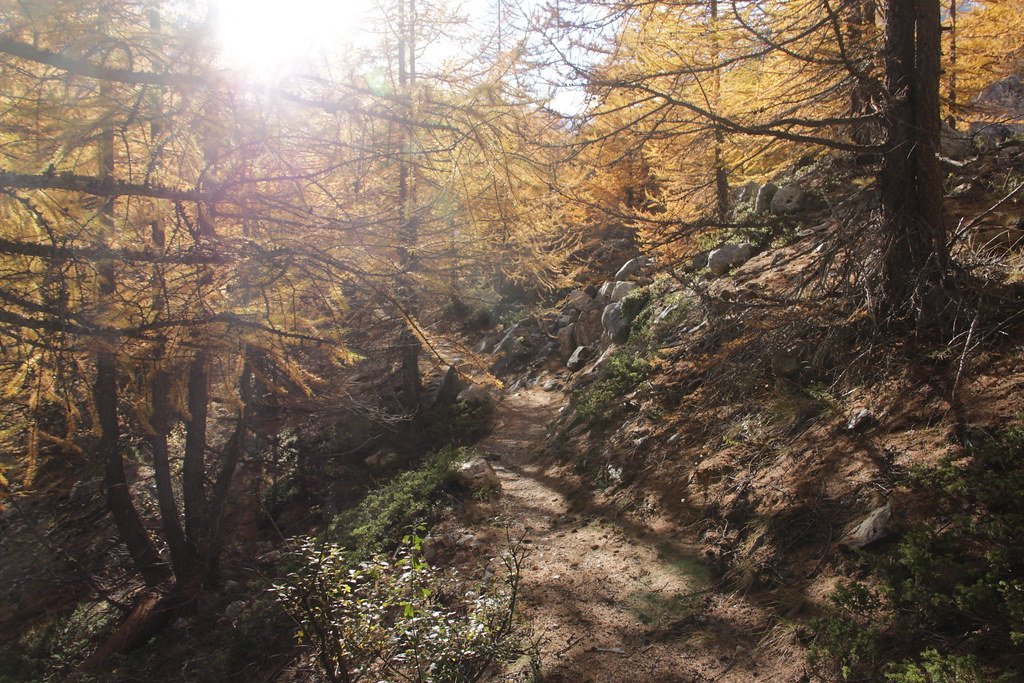
In Chile, a Patagonian cypress (Fitzroya cupressoides) known as the Alerce Milenario or Gran Abuelo (great grandfather in Spanish) could be 500 years older than reigning champion Methuselah. Dating of the Alerce Milenario was accomplished not via the traditional method of “coring” the tree — driving a thin, hollow screw through the middle of the tree to extract a core where each ring can be tallied — but using a partial ring count coupled with statistical computer modeling to make up the difference. In the temperate rainforests of Chile and Argentina stands a tree that might be the oldest living thing on Earth. The Alerce tree, also known as Patagonian cypress, grows so slowly that some specimens may be over 5,000 years old — potentially older than even the famous Methuselah bristlecone pine. These towering giants can reach heights of over 150 feet, but they take their time getting there, growing just a few millimeters in diameter each year. Alerce trees have developed an incredible resistance to decay, with dead specimens remaining intact for centuries in the cool, humid climate of their native forests. Unfortunately, their beautiful, durable wood made them targets for logging, and many ancient groves were cut down before their age and significance were understood. Today, the remaining old-growth Alerce forests are protected, but climate change poses new threats to these ancient survivors. Scientists are racing to study these remarkable trees before it’s too late, hoping to unlock the secrets of their extraordinary longevity.
Slow Growth as a Climate Strategy

Over the past two decades, the Western U.S., grappling with more severe climate change impacts, has exhibited a notable slowdown in productivity, while the Eastern U.S., experiencing milder climate effects, has seen slightly accelerated growth. The world’s slowest-growing plants aren’t just evolutionary oddities — they’re climate change survivors with strategies that could help us understand how vegetation will adapt to our rapidly changing world. With trees growing slower due to adverse climate change effects, including decreased precipitation, the study implies that, even without the intensifying wildfires, the carbon sink in Western forests will continue to weaken. Their methodical approach to growth allows them to build incredibly robust structures that can withstand extreme weather, temperature fluctuations, and resource scarcity. While fast-growing plants boom and bust with favorable and unfavorable conditions, slow growers maintain steady, consistent progress regardless of short-term environmental changes. Globally, forests appear to be struggling. A July 2024 study found that forests overall failed to absorb the year before as much carbon dioxide from the atmosphere as in the past, due largely to the Amazon drought and wildfires in Canada

